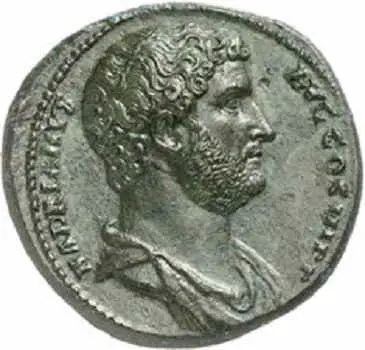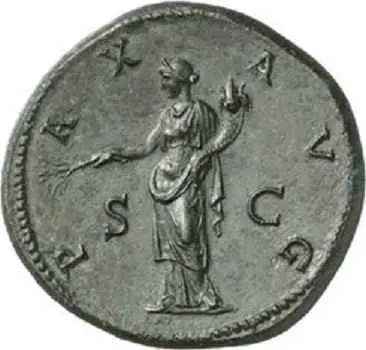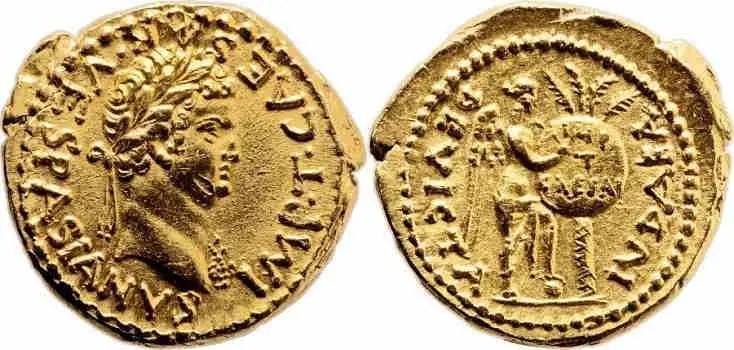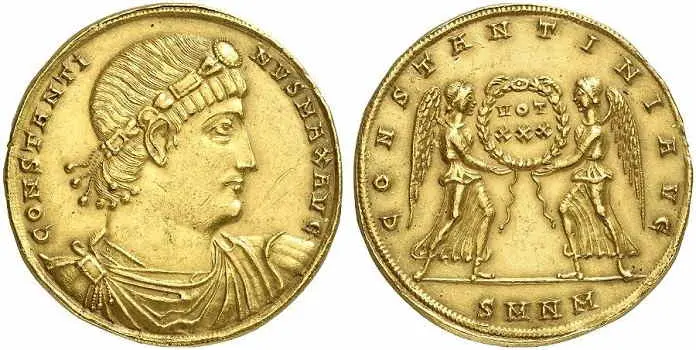Ed. note: This article is periodically updated to reflect the current price of most valuable coins.
In Coleccionistas de Monedas, we fight against the misinformation surrounding the world of coins on the Internet. For this reason, our articles are entirely written by people, not AI or other automated systems. Additionally, we link to all sources and references for coin prices, with the goal of providing you with real, updated, and reliable information.
How do we verify coin prices and values?
At Coleccionistas de Monedas, we are committed to providing accurate, trustworthy, and well-sourced numismatic information. We understand that articles about coin values can influence important financial decisions, which is why we apply a clear and rigorous methodology to estimate prices.
Sources used
- PCGS Price Guide: The official pricing guide from the Professional Coin Grading Service.
- NGC Price Guide: Updated valuation system from the Numismatic Guaranty Company.
- Heritage Auctions: Database of real auction sale prices.
- Red Book: Printed guidebook with historical pricing by grade.
- eBay Sold Listings: Only completed sales are considered, not asking prices.
Validation process
- Price review by condition grade using standard scales (MS, AU, XF, VF).
- Verification of varieties and errors through multiple data sources.
- Expert consultation when prices significantly deviate from the norm.
- Regular updates to reflect current market trends.
Important disclaimer
The values presented in this article are for reference purposes only. Final coin prices can vary significantly depending on authenticity, grade, and selling context. We strongly recommend having your coin certified by a professional service such as PCGS or NGC before selling or purchasing it as an investment.
Among all ancient coins, ancient Roman coins are often considered the most appealing choice for many coin collectors, both as an investment and for their aesthetic beauty and historical significance.
But what types of Roman coins are best suited to introduce you to this captivating classical realm?
In this article, you will discover the prices of the primary Roman coins, comprehend why they hold such value in the field of numismatics, and learn how to categorize them.
JUMP TO SECTION
Types of Ancient Roman coins
When collecting coins from the Roman era, it’s important to consider that there are two significant historical periods: the Roman Republic and the Roman Empire. Collectors can choose to focus on either of these periods or even mix them together.
If you opt to concentrate on a single period, selecting the type of metal you prefer would be the most advisable approach. Roman coins were crafted from various metals, including copper, gold (such as the Aces and Aurus), and silver, like the renowned denarius.
You can choose the material that appeals to you the most, but personally, I recommend primarily focusing on silver or gold, especially if you’re considering them as investments. These metals tend to be more appealing options for collectors. Additionally, many collectors decide to assemble their collections based on the minting locations, known as “provincial Roman coins“.
Here is a list of some of the most important types of Roman coins:
- The AEs or Roman As: examples from the Early Roman Empire that designate any coin containing a high proportion of copper. The denominations AE 1, AE 2, AE 3 and AE 4 express the different sizes of their copper or bronze coins.
- Antoninianum: unlike the denarius, it is slightly larger. On the other hand, the effigies of the emperors appear with a radiated crown (sometimes with a background of trees, palms, ferns or flowers) and the empresses present the bust on a crescent moon. It was also called double denarius, and after a while, it replaced the denarius. However, it gradually lost the purity of its silver, as well as size and weight. In fact, in the time of Trajan Decius, it was made of fleece, then bronze, and in the end, almost entirely of copper.
- Assarion or assaria: these were bronze pieces used locally in the provinces of Lower Moesia and Thrace. They were coined with Greek legends.
- Aurelian: those known as silver Antoninianums.
- Denarius aureus, aurei: these were sporadically minted from Sila and regularly from Julius Caesar. It was equivalent to 25 silver denarius, 100 Sestertius, 200 dupondii, 400 aces or 1600 quadrants.
- Binio: a gold specimen equivalent to two gold coins minted after Valerian.
- Tracing: any non-Roman bronze piece, for example, Greek or from other cultures.
- Centennial or centennialis: a bronze piece with only a small proportion of silver. It was minted in the time of Constantine and was equivalent to 100 denarii.
- Iberian denarius: a denarius minted in Hispania Citerior by the Iberians and Celts during the Roman domination.
How to identify coins from the Roman Empire
One of the reasons why coins from the Imperial period are more attractive is because on most of their obverse sides appear the emperors under whose reign they were coined. So we can focus on collecting coins depicting our favorite emperors or simply quickly identify the decades of the coins if we know a little about the history.
In case you don’t have the emperor’s bust, we have a Latin legend on the obverse and/or reverse that helps us to better identify the coin and type as soon as we learn how to use a catalog.
RIC – The Reference Catalogue
The reference catalog used by almost all auction houses and merchants to identify Roman coins is the “Roman Imperial Coins” (RIC), which has a number assigned to each coin, making the collection very convenient to keep track of.
How to identify Roman coins by their reverse?
There are Latin inscriptions on both the obverse and reverse sides. However, knowing the figures that appear on the backs, we can quickly identify the coin in question.
Some of the most typical figures are:
- Deities
- Emperors themselves
- Victory in different forms
What does SC mean on Roman coins?
Many of the Roman coins include the acronym SC. This represents the “Senatus Consulto“, which indicates the legality of the coinage when it is approved for production. However, the fact that these initials do not appear does not necessarily mean that it is unfit for circulation or fraudulent.
How much is a coin from the Roman Empire worth?
The prices, as with any type of coin, vary according to the specimen and its state of conservation. Of course, in the case of gold Roman coins, their own manufacturing material already makes them relatively more expensive than the rest at average prices.
There are some specimens that we can get for a few tens of dollars, although in high conservation they are usually in the price range of $100 to $1,000. There are also many cases in which they are worth thousands and even tens of thousands of dollars, as in many aurei and in some denarii or Sestertii (among other currencies).
How much is a roman coin worth?
As you can imagine the most expensive Roman coins are within the reach of very few. Of all of them, the number one is a sestertius from Hadrian, auctioned for $1,648,805.
Ancient Roman coin value chart (2026 Update)
Here you have a list of the most interesting Roman coins (you can check their values below).
| Coin | Material | Period | Value | Weigth |
| Sestertius | Silver, bronce, brass | Until 260 a.C. | ¼ denarius | 1,13g 54,5g 27,2g |
| Denarius | Silver | Until 360 a.C. | denarius | 4,54g 3,9g 3,4g 2,36g 1,7g |
| Antoninianus | 5%- 50% Silver | 215 d.C-305 a.C. | 2 denarius | 1,6 times denarius. |
| Aureus | Gold | Until s. IV a.C. | 25 denarius | 8g 7,1g 6,4g |
| Solidus | Gold | Since s. IV a.C. | 25 denarius | 4,5g |
Sestertius, among the most collectible silver Roman coins

Sestertii were manufactured in silver during the Republic with a weight of just over a gram. Later, during the Empire, they were coined in bronze and finally in brass.
The size of the imperial Sestertius makes these coins a very interesting, and at the same time cheap option, compared to the rest of the coins detailed below.

In its imperial versions, we can appreciate the busts of the emperors in a visual way. A sight that will impact any fan who holds it in his hands.
What is the price of a Sestertium?
The price of these coins is around $100 in some cases, but most of them in XF qualities are between $100 to $300. In the cases of certain emperors, and rarer specimens with incredible quality; the prices can shoot up to thousands and even millions of dollars, as in the case of the aforementioned most expensive Roman coin.
Some examples of prices for different imperial Sestertius with their RIC catalog numbers can be seen below.
Prices of Imperial Sestertius (Roman currency)
Imperial Sestertius roman coin value chart
| Emperor | RIC | Grade | Price |
|---|---|---|---|
| Marcus Aurelius | 861 | VF35 | $450 |
| Augustus | 68 | XF40 | $1,500 |
| Gordianus III | 277 | XF40 | $120 |
| Filipus II | 267 | VF30 | $140 |
Denarius – a cornerstone in ancient Roman coins

The denarius is the reference currency in Roman coin collecting, and was center of its economy until it was replaced as the central unit by the double denarius or Antoninianus.
It is a silver coin of not great size, but pleasant to collect, easy to sell and always a possible investment when in high conservation.
The designs of the Republic coins include divinities and emperors – during the Empire – that authorized its emission.
What is the price of a denarius?
The prices of these coins are very variable, there are some specimens in good conservation that are around $100 and others that reach hundreds of thousands of dollars; like the famous denarius of the Ides of March, which commemorates the assassination of Julius Caesar.
Some examples of prices of Imperial denarii with their RIC catalog numbers.
Denarius roman coin value chart
| Emperor | RIC | Grade | Price |
|---|---|---|---|
| Augustus | 86a | XF | $1,000 |
| Elagabalus | 140 | XF40 | $60 |
| Caracalla | 266 | AU50 | $100 |
| Hadrian | 257 | XF40 | $250 |
Antoninianus or Double Denarius

Its original name is uncertain, but calling it a double denarius gives us a clue as to its functionality. Its larger size makes it a good candidate as a collectible, as well as being the successor to the denarius with its similar design.
What is the price of an Antoninianus?
There are a lot of specimens that start from tens of dollars, and most of them do not exceed $200, so it is an economic purchase option in many cases. Of course, there are exceptions, such as some Antoninians from Pacatianus, which are over thousands of dollars.
Here you can see a price list of Antoninii with their RIC catalog numbers.
Antoninianus value chart
| Emperor | RIC | Grade | Price |
|---|---|---|---|
| Probus | 223 | XF | $70 |
| Caracalla | 283B | XF40 | $650 |
| Herennius Etruscus | 138 | XF40 | $150 |
| Trajan | 28B | AU55 | $60 |
Aureus – the most popular gold Roman coin

The Aureus is probably one of the most appreciated Roman gold coins in numismatics. With the same size as a denarius and a similar design, it is a safe purchase in terms of conservation of value. As always, gold is the best bet and as you can imagine, its historical value is enormous.
What is the price of a Aureus?
It is difficult to find gold coins below $1,000. From this price up to $10,000 is where most of them are found, but there are also specimens that reach over half a million dollars, such as the Titus Aureus that reached $800,000 (image above).
Here are some examples of prices of gold coins with their RIC catalog numbers.
Antoninianus value chart
| Emperor | RIC | Grade | Price |
|---|---|---|---|
| Marcus Aurelius | 451 | AU50 | $5,963 |
| Nero | 66 | XF | $6,034 |
| Diadumenian | 115 | XF/S | $270,000 |
| Septimius Severus | 181B | XF/S | $83,566 |
Solidus

This is the currency that replaced the golden coin depicting Constantine I. It is also made of gold and is very interesting to collect because it lasted beyond the fall of the Roman Empire, so you can extend your coin collection further centuries ahead.
What is the price of a Solidus?
Cheaper than a gold one – we can find ancient specimens under $1,000 and can even get some for $300. Copies like Constantine I reach $759,584.
Examples of prices of gold coins with their RIC catalog numbers.
Solidus value chart
| Emperor | RIC | Grade | Price |
|---|---|---|---|
| Valens | IX 1c | VF30 | $2,084 |
| Honorius | 1206a | AU50 | $963 |
| Leo I | 605 | XF40 | $463 |
| Theodosius II | 293 | AU50 | $895 |

